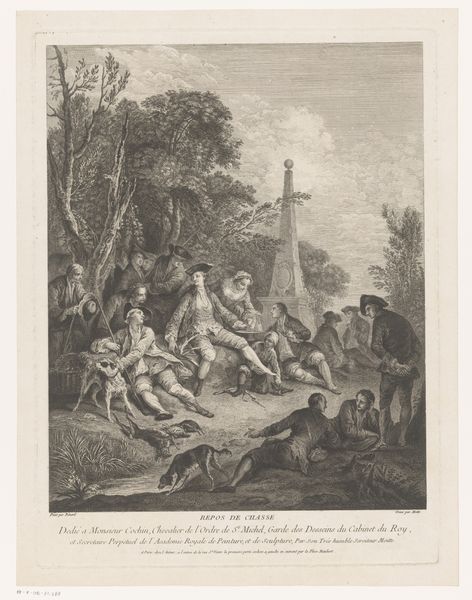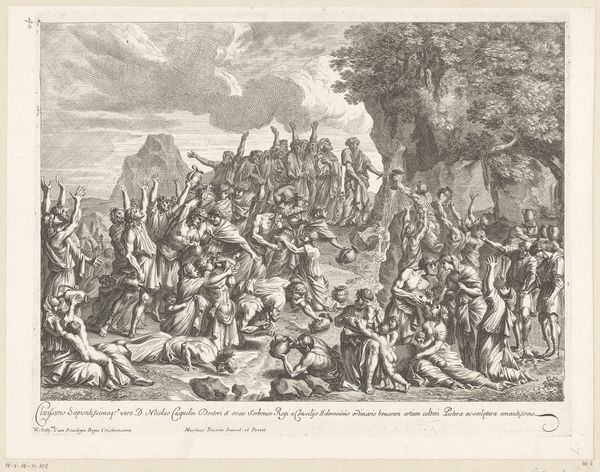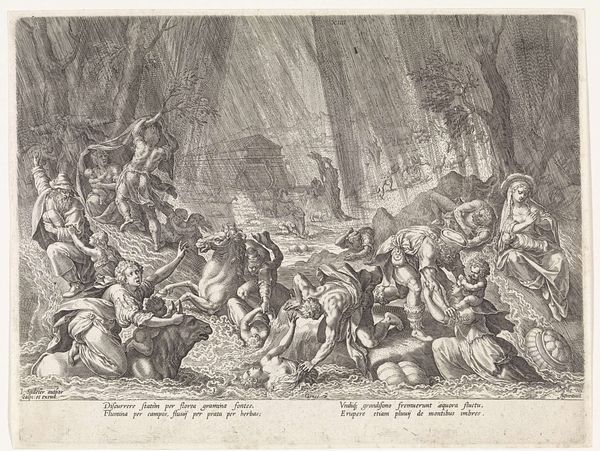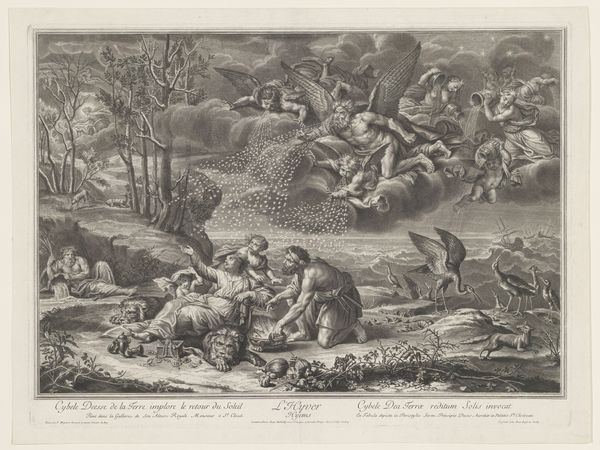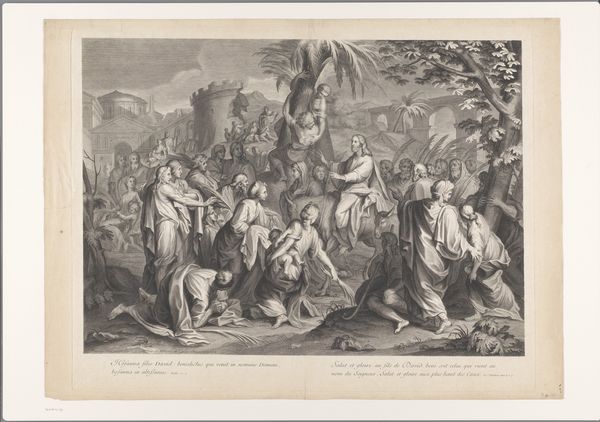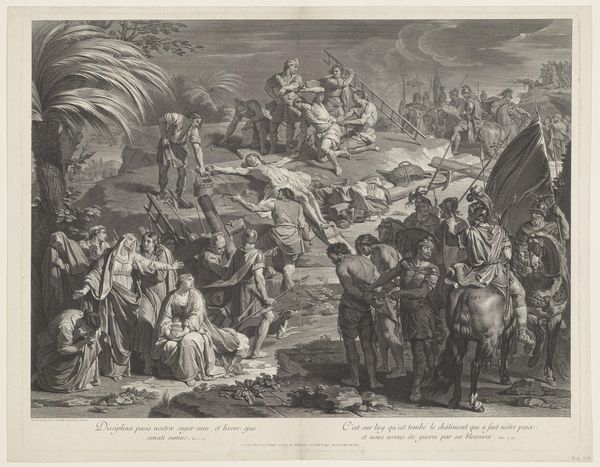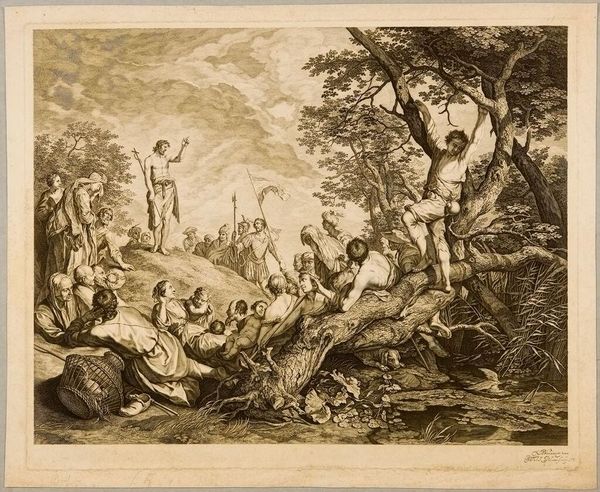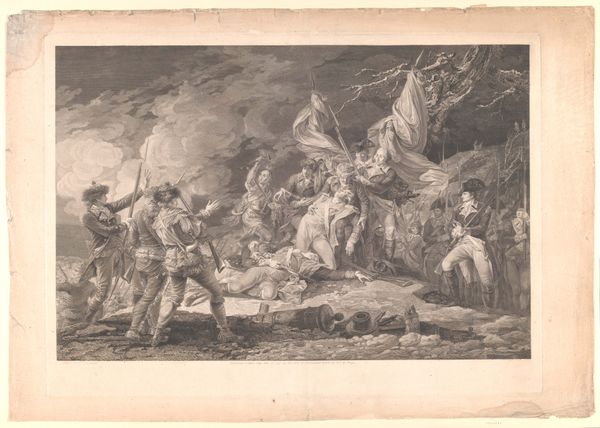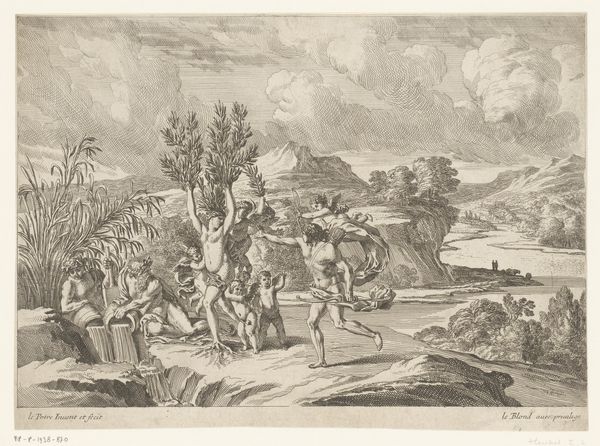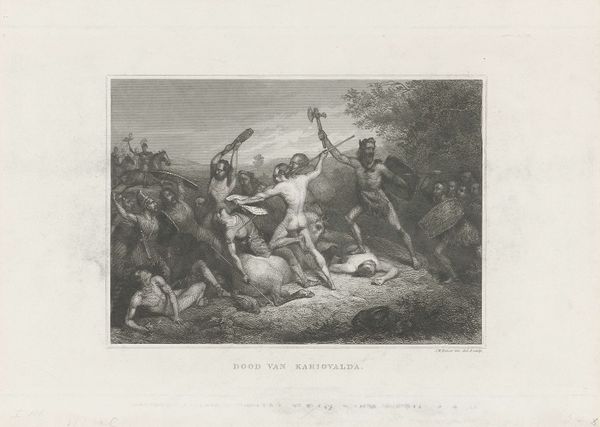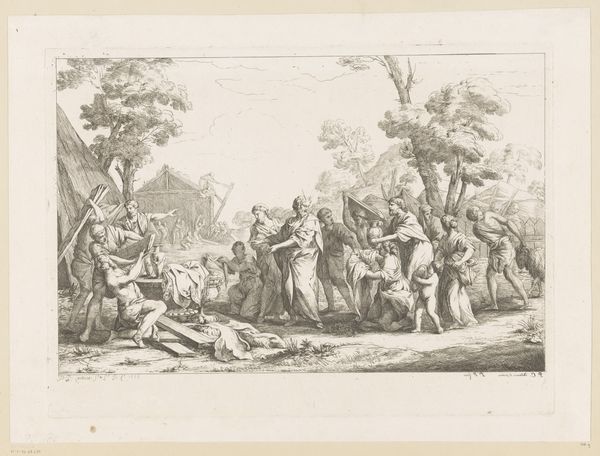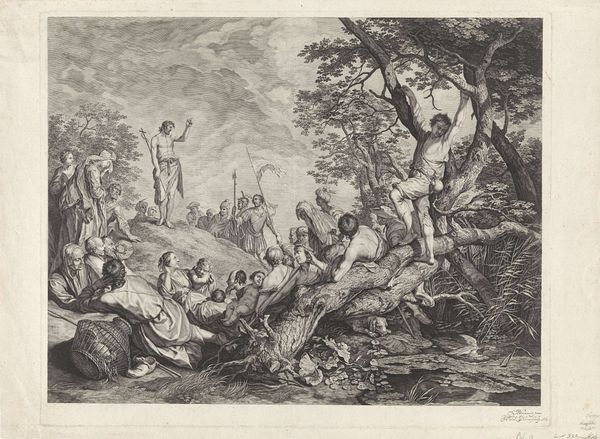
print, engraving
#
narrative-art
#
baroque
# print
#
old engraving style
#
figuration
#
history-painting
#
engraving
Dimensions: height 424 mm, width 528 mm
Copyright: Rijks Museum: Open Domain
Curator: Let’s turn our attention to “Pyrrhus wordt gered,” or "Pyrrhus Saved," a 1676 engraving by Guillaume Chasteau, housed here at the Rijksmuseum. What are your initial impressions? Editor: It’s all very linear. I see lines etched in, with gradations for shading. So many figures in dramatic poses, kind of chaotic yet tightly controlled by the graphic. It's intense, busy, Baroque! Curator: Precisely. Chasteau, as a skilled printmaker, captured a moment of high drama from ancient history—specifically, the story of Pyrrhus, King of Epirus, being saved as an infant. Editor: And that is the core of the materiality here, a print. An image made for wider consumption, accessible because it is a mechanically reproduced image on paper. Who got to have these things? Curator: Exactly. Prints played a crucial role in disseminating knowledge and shaping public perceptions, especially about historical events or figures. This engraving, being a detailed depiction of an infant king and military figures, likely appealed to an elite audience. We can speculate this piece may have appealed to a politically invested, scholarly set with some coin. Editor: The landscape behind Pyrrhus seems staged, almost like a backdrop in a play. And those figures on the right – are they rushing towards or away from the infant? It seems ambiguous. Curator: A touch of baroque theatricality I think. Consider how the composition guides the viewer's eye through the narrative—from the besieged city in the background to the desperate act of rescue in the foreground. Each figure conveys intense emotion, from fear to determination. The print's impact depended on shared cultural knowledge and how people at the time felt and viewed historical and biblical figures. Editor: To create such nuance, you have to appreciate the skill to manipulate material; I notice cross-hatching and delicate linework for shadows and textures. A true feat of artisanal craft elevated by subject matter, the making process becomes almost as critical as the end product here. It makes the artist's own labor clear. Curator: A wonderful point. Now that you’ve pointed this out, it seems clearer that this piece provides insight into not only historical subjects, but those who make it their subjects of art. Editor: Absolutely! It leaves me considering how material choices influence historical interpretation.
Comments
No comments
Be the first to comment and join the conversation on the ultimate creative platform.
